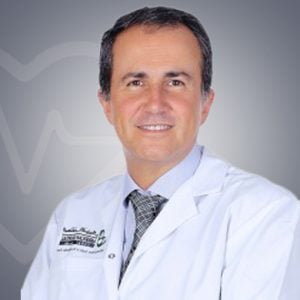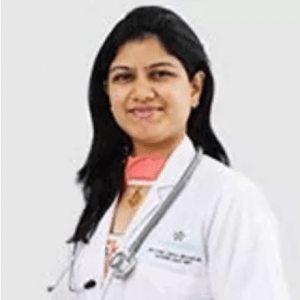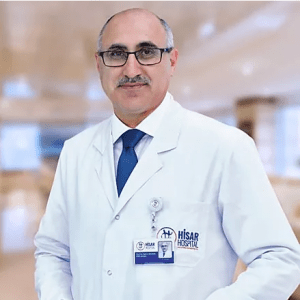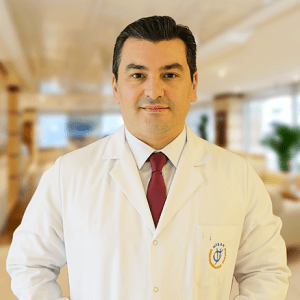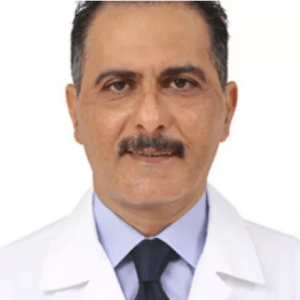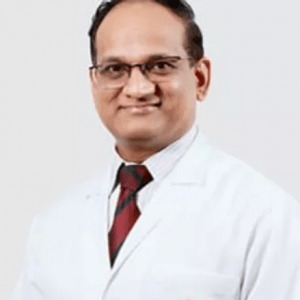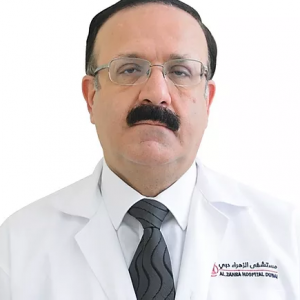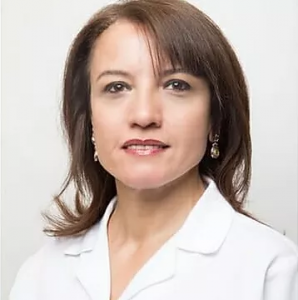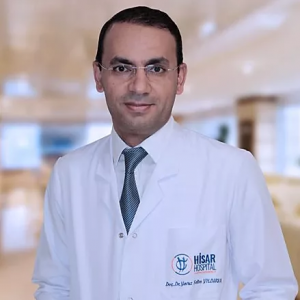Laryngeal Atresia
Laryngeal Atresia, which is the stenosis of the larynx is a medical condition which occurs when the larynx fails to open and causes total upper airway obstruction. This medical condition happens during a baby’s development in utero. It remains totally blocked by the cartilage or other type of tissues when the baby is born. In such a case, the baby will immediately require a tracheostomy at birth to survive. Laryngeal Atresia is otherwise called congenital high airway obstruction syndrome (CHAOS). Congenital laryngeal web is usually a common condition in which the child’s larynx which is usually the voice box containing a layer of web-like tissue obstructs the airway. The situation – Baby CHAOS can cause very severe breathing problems to survive after birth and also has a high mortality rate. It has a fatal anomaly incidence rate in 1: 50,000 births. Fetal lung growth in laryngeal atresia and tracheal agenesis are few of the other complications. Read More
Top Doctors For Laryngeal Atresia Treatments
Top Hospitals For Laryngeal Atresia Treatments
Laryngeal Atresia
Stenosis vs Atresia:
Stenosis usually refers to a partial obstruction which results in a narrowing of the opening i.e. lumen of the intestine. While, on the other hand, atresia is generally a broad term that is used to describe a complete blockage or in fact an obstruction that is anywhere in the intestine.
Diagnosis and Treatment of Laryngeal Atresia (Airway Obstruction Treatment):
The diagnosis and treatment procedures for laryngeal atresia are as follows:
Prior to the treatment:
- Doctor usually performs prenatal ultrasound laryngeal atresia in the laryngeal aditus prior to the treatment procedure in order to determine the condition
- If laryngeal atresia is detected, for further evaluation as well as management, the mother of the child will be referred to Center for Fetal Diagnosis and Treatment (CHOP)
- If laryngeal atresia is usually undetected before birth, the symptoms show itself once after delivery. Especially when the baby doesn’t cry or inhale
During the treatment:
Treatment usually depends on the detection performed using the prenatal ultrasound medical procedure. These are during the treatment medical procedures:
- Technological advancements have actually made it possible for the doctors to treat the baby before they are even born
- Fetal EXIT or ex utero intrapartum treatment is one such surgical procedure where the doctors conduct the treatment usually like a Cesarean section
- Fetal surgeons from Centre for Fetal Diagnosis and Treatment does the surgery in the operating room
- Doctor uses a special uterine stapling device in order to open the uterus. The special device is used to prevent bleeding
- General anesthesia is given in order to preserve uteroplacental blood flow by the doctor and also to ensure by the doctor that the uterus is mainly relaxed
- This allows the doctor enough time for them to perform different procedures such as micro laryngoscopy, bronchoscopy, tracheostomy, surfactant administration procedures. Apart from which laryngeal stent is also placed
- During the bronchoscopy procedure, the pediatric surgeon usually passes the bronchoscope into the baby’s mouth in order to look more closely on what’s happening in the airway
- The above procedures are done in order to provide adequate ventilation as well as secure the airway of the baby
- Ear, Nose and Throat (ENT) specialists and surgeons will also work closely along with the fetal surgeons in order to manage the child’s airway
- In most cases, if the medical condition was not found during the time of pregnancy, once the baby is born, the doctor makes an incision immediately mainly under the lower part of the windpipe or trachea in order to allow them to breathe.
- Your doctor also places a tube through this opening. Breathing is then done through this tube rather than with the help of nose and mouth
- Post-surgery your baby will usually be brought by your surgeons to the Intensive Care unit for further assessment as well as close observation of your baby
Prognosis, Post-treatment and Recovery:
- Though many children recover, in most of the cases, many children after birth with the medical condition – Laryngeal Atresia usually require many operations during their entire lifetime
- In many cases, when the child reaches 4 years of age, reconstructive surgery is usually performed
- Cricotracheal resection surgery with a posterior graft is usually performed by your doctor
- For recovery, a plastic tube making the airway open called a stent is left in place for almost six months. It is done along with tracheotomy
- Infant care is then provided by the Nursery Intensive Care team
- During prognosis, many children will have voice problems as they grow up mainly since the sound coming isn’t from the vocal cords
Laryngeal Atresia Complications:
Few of the complications associated with laryngeal atresia post-surgery of the unborn baby or the child post birth are as follows:
- Presence of other birth defects during the time of surgery can complicate the medical treatment procedure
- Abnormalities during the time of birth can also increase the complications
- Lung swelling endangering the heart function post-surgery might also be few of the complications associated with laryngeal atresia
- Inability to talk as well as inability to eat or drink by mouth are also few of the complications associated with laryngeal atresia
Symptoms
Some of the symptoms of laryngeal atresia includes:
- Severe airway obstruction
- Breathing difficulty
- Enlarged and echogenic lungs
- Dilated bronchi or trachea
- Presence of fetal ascites
- Displaced to the midline fetal heart
- Diaphragmatic inversion or flattening
Causes
Few of the causes of laryngeal atresia are as follows:
- Tracheal stenosis (tracheal obstruction)
- Double aortic arch compression
- Laryngeal cysts
- Oropharynx tumors
- Bronchial obstruction
FAQ
1. What is esophageal laryngeal atresia?
Esophageal Laryngeal Atresia is usually a condition in a baby where an abnormal gap forms between esophagus and the stomach. Usually in this medical condition, instead of esophagus ending in the stomach, it ends in a pouch. The baby thus cannot be fed by mouth since the food normally cannot reach the child's stomach.
2. What are the medications to take for laryngeal atresia?
Laryngeal atresia normally involves ex utero intrapartum as part of medication and medical treatment.
3. What is airway obstruction?
An airway obstruction is generally a blockage that is in any part of the airway. It may partially or even totally prevent the air from getting into your lungs.
4. What is congenital tracheal stenosis?
Congenital tracheal stenosis or tracheal atresia is a birth defect rare condition in which the trachea cartilage support structure can normally cause a narrowing of the airway. Usually tracheal stenosis or tracheal obstruction is life threatening situation to the baby
5. What is congenital pseudarthrosis of the clavicle?
Congenital pseudarthrosis of the clavicle or PCC is a very rare condition which can be diagnosed at birth and also represent a ossification centers disturbance of union.
6. What is congenital lactic acidosis?
It is a rare disease that is caused by the mutations in mitochondrial DNA (mtDNA) which can affect the ability of cells to use energy as well as cause too much lactic acid to build up in the body.
7. What is congenital aural atresia?
It is a common condition in the baby when the ear canal doesn’t actually develop normally. The aural atresia can usually be in one ear (unilateral) or in both ears (bilateral).








